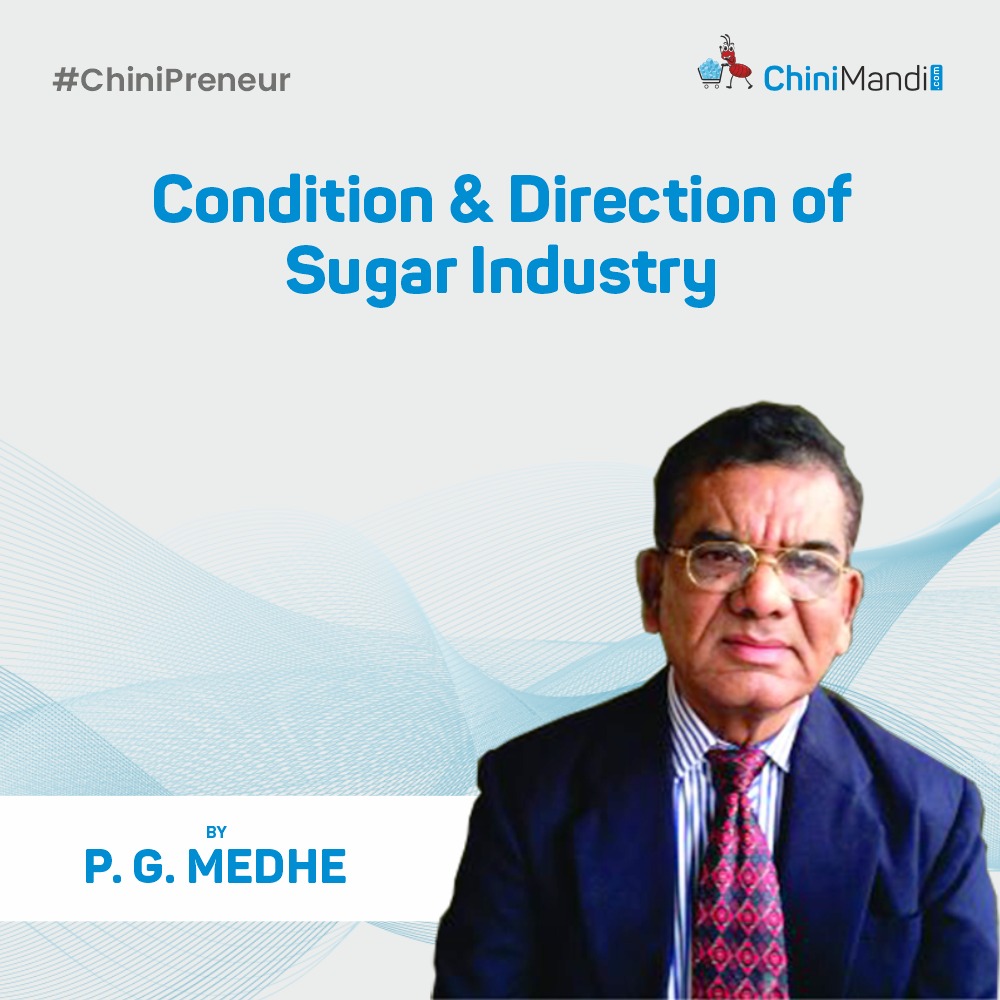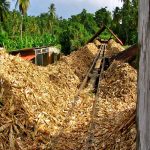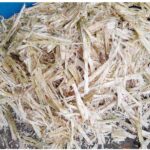In a landmark decision poised to reshape the Indian sugar industry, as per news report by The Economic Times, the Centre has proposed to allow the sale of raw sugar in the domestic market, replacing the six-decade old regulation which allowed only export of the commodity.
This bold move aims to address the surplus production of sugar, stabilize market prices, and provide a new avenue for sugar mills to enhance their profitability. The proposal, which marks a significant shift from the long-standing policy of refining sugar before domestic sale, is expected to have far-reaching implications for both producers and consumers. As the nation gears up for this historic change, stakeholders across the industry are weighing the potential benefits and challenges that lie ahead.
In a move to revamp the regulatory framework of the sugar industry, the government released the draft Sugar (Control) Order 2024 on August 22. This is driven by recent technological advancements in sugar production that have necessitated changes to the existing Sugar (Control) Order, 1966.
As per media report, Department of Food and Public Distribution has sent a copy of the draft amendment to the food safety authority FSSAI seeking comments.
KEY POINTS ABOUT INDIAN SUGAR INDUSTRY: India’s sugar industry is a significant part of the country’s agricultural and industrial landscape. Here are some key points to provide context:
1) Historical Significance: Sugar has been produced in India since ancient times. The country is one of the world’s largest producers and consumers of sugar.
2) Production: India produced about 34 million metric tons of sugar in the 2023/2024 season. The industry supports around 50 million farmers and provides direct employment to over 500,000 workers in sugar mills.
3) Geographical Distribution: The major sugarcane-producing states include Uttar Pradesh, Maharashtra, Karnataka, Tamil Nadu, and Bihar1. These regions benefit from fertile soil and favorable climatic conditions.
4) Economic Impact: The sugar industry is the second-largest agro-based industry in India, after cotton3. It plays a crucial role in the socio-economic development of rural areas, contributing significantly to the livelihoods of millions of farmers and workers.
5) Market Dynamics: India is not only a leading producer but also a significant exporter of sugar. However, the government often regulates exports to ensure domestic availability and price stability.
6) By-products: The processing of sugarcane generates by-products like bagasse, molasses, and press mud, which are used to produce bioethanol, electricity, and other products.
7) Major challenges: Sugar mills in India face several significant challenges that impact their efficiency and profitability.
a) High Production Costs: The cost of raw materials, energy, and labor has been rising, making it difficult for mills to maintain profitability.
b) Fluctuating Sugar Prices: Volatile market prices for sugar can lead to financial instability for mills. This is exacerbated by global competition and fluctuating demand.
c) Inefficient Production Methods: Many mills still use outdated and inefficient production techniques, which result in lower yields and higher operational costs2.
d) Seasonal Nature of Sugarcane: Sugarcane is a seasonal crop, leading to periods of high activity followed by inactivity. This seasonality can cause bottlenecks and delays in processing during peak times
e) Water Scarcity: Sugarcane is a water-intensive crop, and water scarcity, especially in regions like Maharashtra and Karnataka, poses a significant challenge.
f) Regulatory Issues: The industry is heavily regulated, with price controls and other government interventions that can sometimes hinder operational flexibility and profitability.
g) Financial Constraints: Many mills face issues with inadequate working capital, making it difficult to invest in modernizing equipment or expanding operations5.
h) Environmental Concerns: The industry also faces environmental challenges, including pollution from mills and the high water usage associated with sugarcane cultivation.
Addressing these challenges requires a combination of policy support, technological upgrades, and sustainable practices to ensure the long-term viability of the sugar industry in India. This context should help frame the significance of the Union Government’s proposal to sell raw sugar in the domestic market.
PURPOSE OF INTRODUCING RAW SUGAR IN DOMESTIC MARKET AFTER AROUND 60 YEARS: The Indian government has proposed allowing the sale of raw sugar in the domestic market, ending a six-decade-old regulation that restricted its sale exclusively for export. Here are the key reasons behind this move:
1. Technological Advancements-
Improved Production Processes: Advances in sugar production technology have made it feasible to produce raw sugar domestically. This allows Indian mills to refine raw sugar locally, rather than exporting it for overseas refining.
2. Economic Benefits-
Higher Prices: Raw sugar commands a higher price than refined sugar, which could boost revenue for the sugar industry.
Market Expansion: Introducing raw sugar to the domestic market can diversify the market and create new opportunities for producers.
3. Regulatory Changes-
Draft ‘Sugar (Control) Order, 2024’: The proposal is part of this draft order, which aims to update the existing regulations from 1966. The new order also includes provisions for traditional sweeteners like gur (jaggery) and khandsari (a type of unrefined sugar).
4. Fair and Remunerative Price (FRP)-
Benefit to Farmers: The new regulation aims to ensure that farmers benefit from the Fair and Remunerative Price (FRP) norms, which were previously not applicable to smaller khandsari units.
5. Government Oversight-
Price Regulation: The government will have the authority to regulate sugar prices, taking into account factors like the FRP of sugarcane, conversion costs, and revenue from by-products.
Inspections and Seizures: The draft order also outlines the government’s power to conduct inspections, searches, and seizures related to sugar production.
6. Stakeholder Feedback-
Consultation Process: The government has invited feedback from stakeholders on the draft proposal, indicating a collaborative approach to policy-making. This move is expected to transform India’s sugar industry by boosting domestic sales of raw sugar and providing economic benefits to the sector.
IMPACT ON SUGAR FACTORIES & REFINERIES: Introducing raw sugar into the domestic market will have several impacts on sugar mills and refineries.
1. Operational Adjustments-
Processing Changes: Mills and refineries will need to adapt their processes to handle raw sugar, which may involve upgrading equipment and training staff.
Quality Control: Ensuring the quality of raw sugar will require new protocols and standards.
2. Economic Implications-
Investment Costs: Upgrading facilities to process raw sugar will require significant investment.
Revenue Opportunities: Despite initial costs, mills and refineries could benefit from higher prices for raw sugar compared to refined sugar.
3. Market Dynamics-
Increased Competition: Domestic mills may face competition from imported raw sugar, which could affect market share and pricing.
Diversification: The ability to sell both raw and refined sugar could open up new market opportunities and revenue streams.
4. Supply Chain Adjustments-
Logistics: Changes in storage and transportation infrastructure will be necessary to accommodate raw sugar.
Distribution: Establishing efficient distribution channels for raw sugar will be crucial for market success.
5. Regulatory Compliance-
New Standards: Mills and refineries will need to comply with new regulatory standards for raw sugar production and sale.
Inspections: Increased government oversight and inspections may be required to ensure compliance.
6. Consumer Demand-
Market Education: Educating consumers about the benefits and uses of raw sugar will be important to drive demand.
Product Differentiation: Mills and refineries may need to differentiate their products to appeal to different consumer preferences.
Overall, while there are challenges, the introduction of raw sugar into the domestic market presents significant opportunities for growth and diversification for sugar mills and refineries.
MAIN DIFFERENCES BETWEEN RAW AND REFINED SUGAR: The main differences between raw sugar and refined sugar lie in their processing, appearance, and nutritional content:
1. Processing-
Raw Sugar: Produced by evaporating the juice from sugar cane and then crystallizing it. It undergoes minimal processing, retaining a thin layer of molasses, which gives it a light brown colour.
Refined Sugar: Undergoes additional processing to remove impurities and molasses. This involves filtering, boiling, and recrystallizing, resulting in pure white crystals.
2. Appearance and Texture-
Raw Sugar: Has larger, coarser crystals with a light golden-brown color due to the molasses content.
Refined Sugar: Has fine, white crystals that are uniform in size and texture1.
3. Nutritional Content-
Raw Sugar: Contains trace amounts of minerals like calcium, iron, and potassium from the molasses. However, these amounts are minimal and do not significantly impact nutritional value.
Refined Sugar: Lacks these trace minerals as the refining process removes the molasses.
4. Flavor-
Raw Sugar: Has a slight molasses flavor, which can add a subtle depth to baked goods and beverages.
Refined Sugar: Has a neutral, sweet taste without any additional flavors1.
5. Uses in Cooking-
Raw Sugar: Often used as a topping for baked goods or in recipes where its coarse texture and molasses flavor are desirable.
Refined Sugar: Commonly used in a wide range of recipes, from baking to beverages, due to its ability to dissolve easily and provide consistent sweetness.
Both types of sugar are calorically identical, so the choice between them often comes down to personal preference and the specific requirements of a recipe.
HEALTH IMPLICATIONS: Consuming refined sugar can have several negative health implications:
1. Obesity and Weight Gain-
Caloric Density: Refined sugar is high in calories but low in nutritional value, contributing to weight gain and obesity.
Appetite Control: Sugary foods can disrupt the body’s appetite control mechanisms, leading to overeating.
2. Type 2 Diabetes-
Insulin Resistance: High intake of refined sugar can lead to insulin resistance, a precursor to type 2 diabetes.
Blood Sugar Spikes: Refined sugar causes rapid spikes and drops in blood sugar levels, which can strain the body’s insulin response2.
3. Heart Disease-
Increased Risk: Diets high in refined sugar are linked to a higher risk of heart disease.
Chronic Inflammation: Excessive sugar intake can lead to chronic inflammation, a risk factor for heart disease.
4. Liver Disease-
Fatty Liver: The liver metabolizes sugar similarly to alcohol, converting excess sugar into fat, which can lead to non-alcoholic fatty liver disease.
5. Dental Health-
Tooth Decay: Sugar is a primary cause of tooth decay and cavities, as it feeds harmful bacteria in the mouth.
6. Mental Health-
Depression and Anxiety: High sugar consumption has been linked to an increased risk of depression and anxiety.
Cognitive Decline: There is evidence suggesting that high sugar intake may contribute to cognitive decline and dementia.
7. Cancer-
Increased Risk: Some studies suggest a link between high sugar consumption and an increased risk of certain types of cancer2.
8. General Health-
Nutrient Deficiency: Consuming too much refined sugar can lead to nutrient deficiencies, as it often replaces more nutritious foods in the diet.
Reducing refined sugar intake and opting for natural sugars found in whole foods like fruits and vegetables can help mitigate these health risks.
DESPITE CHALLENGES, HOW NEW POLICY WILL BENEFIT SUGAR INDUSTRY FINANCIALLY TO ACHIVE SUSTAINABILITY?
Despite the challenges, introducing raw sugar into the domestic market can offer several financial and sustainability benefits for the sugar industry:
1. Increased Revenue-
Higher Prices: Raw sugar typically commands higher prices than refined sugar, which can boost overall revenue for sugar mills and refineries.
Market Diversification: By selling both raw and refined sugar, producers can tap into new market segments and reduce dependency on a single product line.
2. Cost Efficiency-
Reduced Export Costs: Selling raw sugar domestically can save on export-related costs, such as transportation and tariffs.
Local Processing: Processing raw sugar locally can be more cost-effective than exporting it for refining abroad.
3. Sustainability-
Energy Savings: Producing raw sugar requires less energy compared to refining it, which can reduce the industry’s carbon footprint.
Waste Reduction: The by-products of raw sugar production, such as molasses, can be used in other industries, promoting a circular economy.
4. Support for Farmers-
Fair and Remunerative Price (FRP): Ensuring that farmers receive a fair price for their sugarcane can improve their financial stability and encourage sustainable farming practices.
Increased Demand: Higher demand for raw sugar can lead to increased sugarcane cultivation, benefiting farmers economically.
5. Regulatory Benefits-
Government Support: The new policy includes provisions for government oversight and support, which can help stabilize the market and ensure fair practices.
Price Regulation: The government’s ability to regulate prices can protect producers from market volatility and ensure sustainable pricing.
6. Consumer Benefits-
Healthier Options: Raw sugar retains some minerals and has a lower glycemic index compared to refined sugar, offering a slightly healthier alternative for consumers.
Product Variety: Introducing raw sugar can provide consumers with more choices, potentially increasing overall sugar consumption.
By addressing these financial and sustainability aspects, the policy can help the sugar industry overcome its financial challenges and move towards a more sustainable future.
In conclusion, the Indian government’s decision to reintroduce raw sugar into the domestic market after 60 years marks a significant shift in policy, aimed at revitalizing the sugar industry. Despite the challenges, this move promises to enhance revenue, support sustainable practices, and provide economic benefits to farmers and producers.By embracing technological advancements and regulatory changes, the industry can look forward to a more diversified and resilient future. This policy not only opens new market opportunities but also aligns with broader goals of economic growth and sustainability, paving the way for a more robust and dynamic sugar sector in India.
P.G. Medhe is the former Managing Director of Shri Chhatrapati Rajaram Sahakari Sakhar Karkhana Ltd and sugar industry analyst. He can be contacted at +91 9822329898.


















